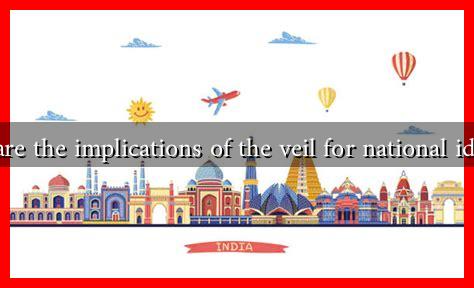-
Table of Contents
What are the Implications of the Veil for National Identity?
The veil, often associated with Islamic culture, has become a focal point in discussions about national identity, multiculturalism, and social cohesion. As societies grapple with increasing diversity, the implications of the veil extend beyond personal choice, touching on issues of integration, secularism, and national values. This article explores the multifaceted implications of the veil for national identity, examining its impact on social dynamics, legal frameworks, and cultural perceptions.
The Veil as a Symbol of Identity
The veil, particularly the hijab, is not merely a piece of clothing; it is a powerful symbol of identity for many Muslim women. It represents religious beliefs, cultural heritage, and personal autonomy. However, its visibility in public spaces often leads to polarized opinions regarding its implications for national identity.
- Religious Expression: For many, wearing the veil is an expression of faith and devotion. It challenges secular narratives that prioritize a homogenized national identity.
- Cultural Heritage: The veil can signify a connection to cultural roots, fostering a sense of belonging among immigrant communities.
- Personal Autonomy: The choice to wear the veil can empower women, allowing them to assert their identity in a society that may otherwise marginalize them.
Legal and Political Implications
The presence of the veil in public life has prompted legal and political debates in various countries, particularly in Europe. Laws regarding the wearing of religious symbols in public spaces have significant implications for national identity.
- France’s Secularism: France has implemented laws banning the wearing of conspicuous religious symbols in public schools. This policy reflects the country’s commitment to secularism but has been criticized for marginalizing Muslim women and undermining their rights.
- Germany’s Integration Policies: In Germany, discussions around the veil have led to debates about integration and national identity. While some advocate for a more inclusive approach, others argue that the veil contradicts German values of gender equality.
- Canada’s Multiculturalism: Canada’s multicultural policies have generally embraced the veil as part of the cultural fabric. This acceptance highlights a different approach to national identity, one that values diversity over uniformity.
Social Dynamics and Public Perception
The veil often serves as a litmus test for societal attitudes towards diversity and inclusion. Public perception of the veil can influence social dynamics and the integration of Muslim communities.
- Stigmatization: In many Western societies, the veil is often associated with extremism, leading to stigmatization of Muslim women who choose to wear it. This can create barriers to social integration and contribute to feelings of alienation.
- Empowerment vs. Oppression: The narrative surrounding the veil is complex. While some view it as a tool of oppression, others see it as a form of empowerment. This dichotomy can shape public discourse and influence policy decisions.
- Interfaith Dialogue: The veil can also serve as a catalyst for interfaith dialogue, prompting discussions about religious freedom, gender rights, and cultural understanding.
Case Studies: The Veil in Action
Examining specific case studies can provide deeper insights into the implications of the veil for national identity.
- Sweden’s Approach: Sweden has adopted a relatively liberal stance towards the veil, allowing women to wear it in public spaces. This approach has fostered a more inclusive national identity, although challenges remain in addressing societal prejudices.
- Austria’s Burqa Ban: In 2017, Austria implemented a ban on full-face veils in public spaces. This law was framed as a measure to promote integration but has been criticized for infringing on personal freedoms and exacerbating social divides.
Conclusion: Navigating the Complexities of National Identity
The implications of the veil for national identity are complex and multifaceted. As societies become increasingly diverse, the challenge lies in balancing respect for individual rights with the need for social cohesion. The veil can serve as both a symbol of cultural identity and a point of contention in discussions about national values. Ultimately, fostering an inclusive dialogue that respects diverse expressions of identity is crucial for building cohesive societies in an era of globalization.
For further reading on the intersection of the veil and national identity, consider exploring resources from organizations such as the Human Rights Watch and the Amnesty International.


